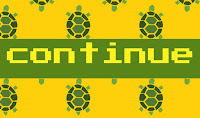Heart on my Sleeve
The following can be understood and consumed as both philosophy and technical advice.
Some musicians have the ability to hear passages of music, fully realized in their heads. Mozart and Beethoven come to mind. That’s one reason I play their music when I paint. Representational artists must develop the skill of conceiving large and small areas of the painting in their head. Then, practice the art of breaking them down into their component parts, each a piece that fits perfectly into the larger whole, the gestalt. There is always give and take, but without that larger vision, it’s easy to get lost in the details.
Find 50 ways to leave a mark. Some marks are a pure expression of who you are in that moment. Others are contrived and phony. Some marks make sense in one place and are ridiculous in another. Ultimately, we must become the marks we make. They are our responsibility to the universe contained in the rectangle (or whatever structure you’ve chosen) within which we must work.
Here’s a new Artbook idea. It’s called, “The Art of Dealing with Adversity.” (Mein Kampf and Art of the Deal, two books I will never read, rolled into one horrific, tell all, art book).
Grant in the Forest
Years of negative messaging from myself and others, in the form of trauma, anxiety, depression, harsh self-assessment, envy, misdirected ambition, people pleasing, barking up the wrong trees, or what at this age I simply refer to as “youthful folly,” has cut pretty deep into whatever potential I had of becoming my best self. Or, perhaps it has created the fertile, but uneasy ground, necessary to unlock my true genius. The result is I’ve become a bit overly sensitive to criticism, somewhat closed to new ideas, stuck in my ways and a little bit afraid of going after my dreams.
I find the best weapon against negativity is a laser beam focus on a mission, that moment-to-moment bravery of just doing the work, where the sheer energy necessary to accomplish my goal pushes out those negative or superfluous thoughts that would derail my progress. That’s what’s at the heart of the Power of Positive Painting. Our intentional focus on method, skill building and mindful creating, keeps all the judgement and negativity at bay, just long enough for us to tap into our limitless potential. The critic can destroy creativity with a word. Yet, the artist must persevere. Negativity is the inevitable result of a mind that is idle or on autopilot. My kindergarten teacher said it best, “busy hands are happy hands.” Creatives need constant direction, focus, structure and purpose to operate at peak performance.
About Having a Portrait
When Cute Children Grow Up
Finding connections, comparing values, resolving edges, refining shapes. These are but a few examples of what I’m doing when I paint in a realistic fasion. I am addressing each need as it arises, making sure it satisfies my ultimate purpose, which is the full realization of the specific universe of the particular painting I am working on. I’ve learned to direct my need for ritual into the productivity portion of my art practice. I prefer to play up my strengths, making a habit of turning a weakness into strength. For example, I am a little ADHD. I could beat myself up about it or activate multiple areas of my painting simultaneously, creating opportunities for harmony and unity. If something’s not right, never fix it. I’m either building into the error or breaking it down completely (wiping out) and trying the passage again. John Singer Sargeant famously painted the same sleeve 17 times, until he created the master stroke, the only one we see today.
Be decisive, like a Bee (that’s short for Beethoven). Sometimes I feel like a little worker bee, building and finding ways to fill specifically designed honeycombs (shapes) with nectar (delicious paint) that I’ve scavenged from the vast planes of flowers, fruits and experiences (my palette), searching, sorting through my field of dreams. Like the worker Bee, there’s no room in my mind for anything else. Some people call this “being in the zone.” I call it survival. I call it bravery.





